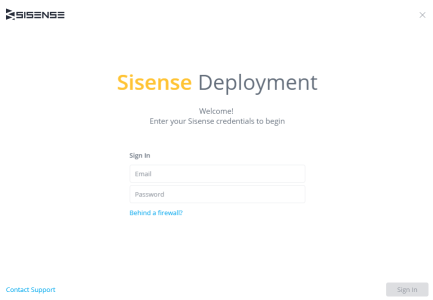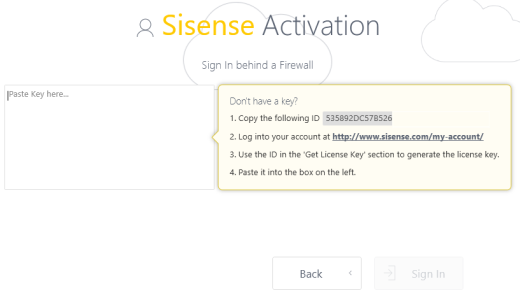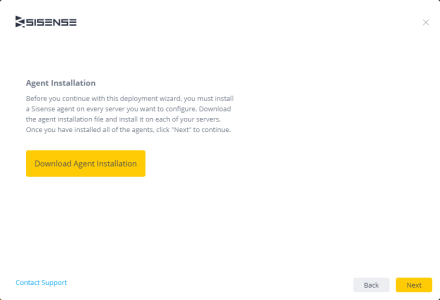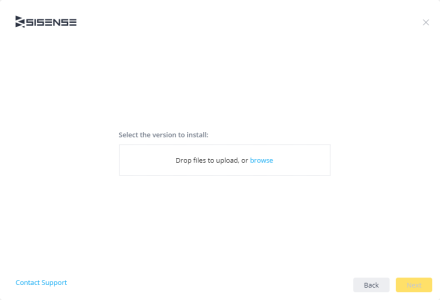Offline Multi-Node Deployments
You can deploy multi-node deployments in secure environments behind firewalls. To support machines behind firewalls, or without internet access, there are a few extra steps you need to perform including opening ports and enabling IIS services.
Once these steps have been completed, you can continue to run the Multi-Node Deployment Wizard and set up one of the relevant models. (See links at the bottom of this page for documentation about the models.)
Adjusting Firewall Settings
The following ports should be open to support a multi-node deployment:
Note: Your servers in a multi-node deployment must be able to ping each other, even behind a firewall.
Web Server:
| Service | Ports | Direction |
|---|---|---|
| Sisense.Oxygen | 31112, 443 | Inbound, Outbound |
| Sisense.Orchestrator | 137-139, 445, 811, 812 | Inbound, Outbound |
| Sisense.Shipper | 5052 | Outbound |
| Sisense.Service.exe | 15000-15050 | Inbound |
| Sisense.Gateway | 8081, 443 | Inbound |
| WinRM | 5986 |
Query/Build Server:
| Service | Ports | Direction |
|---|---|---|
| Sisense.Oxygen | 31112, 443 | Inbound, Outbound |
| Sisense.Orchestrator | 137-139, 445, 811, 812 | Inbound, Outbound |
| Sisense.Shipper | 5052 | Outbound |
| Sisense.Service.exe | 15000-15050 | Inbound |
| Sisense.Gateway | 8081, 443 | Inbound |
| Sisense.Broker (RabbitMQ) | 5672, 15672, 25672, 4369 | Inbound |
| Sisense.Discovery (Zookeeper) | 2181, 2888, 3888 | Inbound |
| Sisense.Repository (MongoDB) | 27018 | Inbound |
| Sisense.CLRConnectorsContainer | 8090, 8098 | Inbound |
| Sisense.JVMConnectorsContainer | 8095, 9000-9010 | Inbound |
| Sisense.ECMS | 811, 812 | Inbound, Outbound |
| IIS | 14996 | Inbound |
| WinRM | 5986 |
Enabling IIS Components
The following components should be enabled for IIS on each server:
- NetFx3
- IIS-WebServerRole
- IIS-WebServer
- IIS-CommonHttpFeatures
- IIS-Security
- IIS-RequestFiltering
- IIS-StaticContent
- IIS-DefaultDocument
- IIS-DirectoryBrowsing
- IIS-HttpErrors
- IIS-ApplicationDevelopment
- IIS-HealthAndDiagnostics
- IIS-HttpLogging
- IIS-Performance
- IIS-HttpCompressionStatic
- IIS-WebServerManagementTools
- IIS-ManagementConsole
- IIS-ASPNET45*
- IIS-NetFxExtensibility45*
- IIS-ISAPIExtensions*
- IIS-ISAPIFilter*
- NetFx4Extended-ASPNET45*
Installing the Multi-Node Deployment Wizard Offline
To install the Multi-Node Deployment Wizard offline and activate it:
1. In the Sisense Activation window, click Behind a Firewall . The product ID is displayed.

2. Copy the product ID.

3. On an online machine, open http://my.sisense.com/ and log in with your Sisense credentials.
4. In the My Account page, from the left menu, select GET KEY.
5. Paste your product ID from the Sisense installation into the field and click GET KEY. Your Off License key is displayed.

6. Copy the key and paste it into the key area in the Sisense Activation window.

7. If you are installing a multi-node deployment, select Install New Deployment, and click Next. If you are modifying an existing deployment, select Upgrade Existing Deployment and click Next.

8. Click Download Agent Installation to install the Sisense Agent. This agent must be installed on all the Sisense servers that are part of your deployment. It allows Sisense to communicate with each of the other machines in your deployment. To install the agent, right-click on the file on each machine and select Run with PowerShell . Click Next.

If you need to run this file offline without copying the file to each server, see [Offline Agent Installation] () .
9. Drop the Sisense Installation file into the window or click browse and navigate to the installation file. Click Next.

10. Return to Step 6 of Deploying Model X for the relevant model below:
- Model 1: 1 Application Node, 1 Query Node/Build Node
- Model 2: 1 Application Node, 1 Query Node, 1 Build Node
- Model 3: 2 Application/Query Nodes and 1 Build Node
.r.